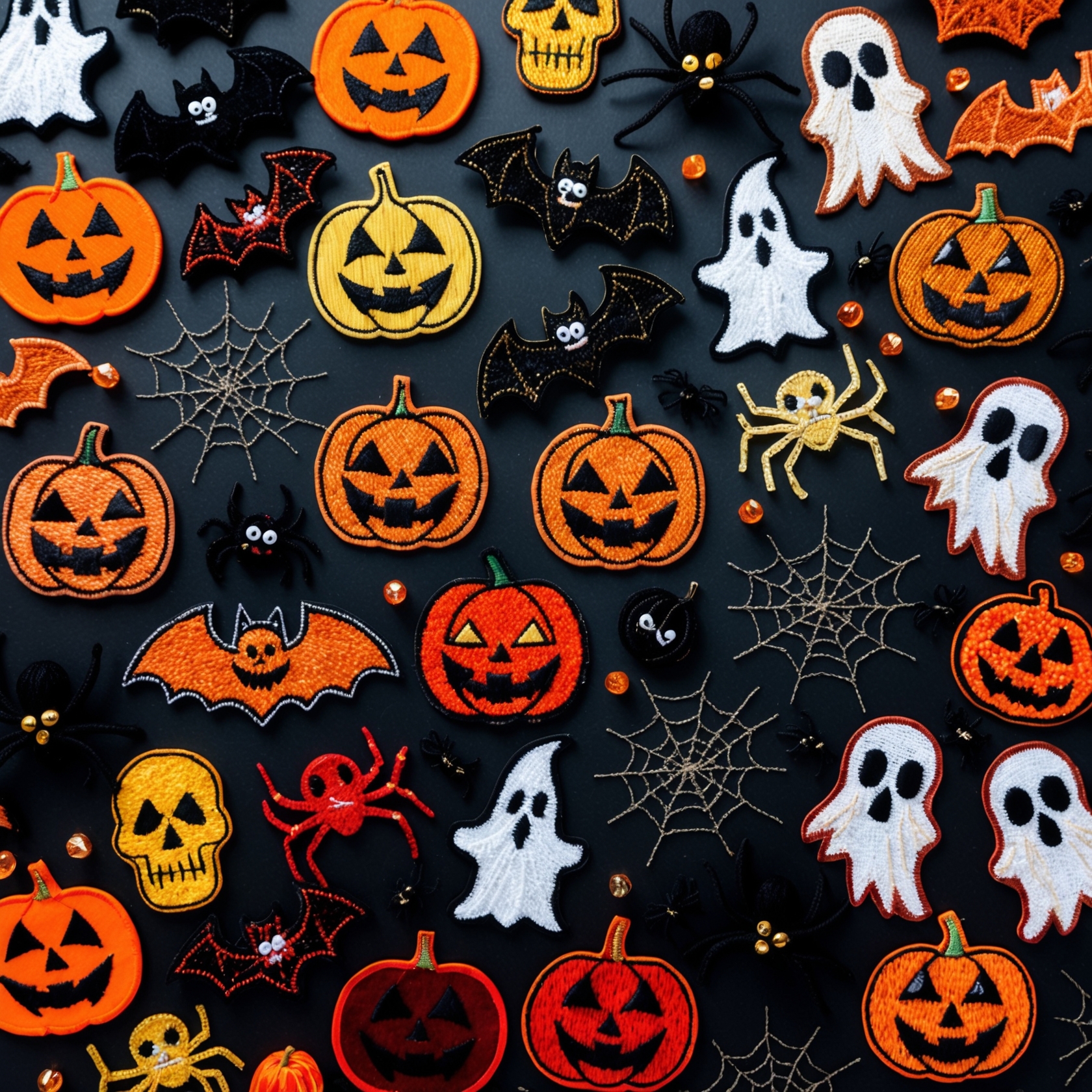PVC patches have become a popular choice for various organizations, clubs, businesses, and hobbyists looking to create durable and eye-catching emblems. These patches, made from soft and flexible polyvinyl chloride (PVC), offer a versatile option for custom designs that can withstand harsh conditions. Selecting the best PVC patches involves understanding the material’s unique properties, the customization options available, and the quality indicators to look for. This comprehensive guide will provide valuable tips and insights to help you choose the best PVC patches for your needs.
PVC patches are increasingly favored for their durability, versatility, and vibrant appearance. Unlike traditional embroidered or woven patches, PVC patches are made from a soft plastic material that can be molded into various shapes and designs. This material offers numerous advantages, including resistance to water, heat, and abrasion, making PVC patches ideal for outdoor and tactical applications.
The process of selecting the best PVC patches involves several key considerations, including design customization, material quality, attachment options, and intended use. Whether you’re a member of a military unit, a sports team, a business, or a hobby group, understanding these factors will help you create patches that meet your specific requirements and last for years.
In this article, we will explore the essential aspects of PVC patches, from their unique features and benefits to the customization options available. We will also provide practical tips for assessing the quality of PVC patches and choosing a reputable manufacturer. By the end of this guide, you will have a comprehensive understanding of how to select the best PVC patches for your organization or personal use.
Understanding PVC Patches
PVC patches stand out due to their unique material properties and the wide range of customization options they offer. To make informed decisions about selecting and designing PVC patches, it’s essential to understand what sets them apart from other types of patches.
What Are PVC Patches?
PVC patches are made from polyvinyl chloride, a type of plastic known for its durability and flexibility. The patches are created using a process called injection molding, where liquid PVC is injected into a custom mold to form the desired design. Once the PVC cools and solidifies, the patch takes on its final shape and details.
One of the primary advantages of PVC patches is their ability to capture intricate designs with high precision. The molding process allows for the creation of raised elements, fine lines, and multiple layers, resulting in a three-dimensional appearance. This makes PVC patches ideal for designs that require detailed logos, text, or artwork.
Key Features and Benefits
Durability: PVC patches are highly durable and resistant to various environmental factors, including water, heat, and UV light. Unlike embroidered patches, which can fray or fade over time, PVC patches maintain their color and integrity even in harsh conditions. This makes them an excellent choice for outdoor activities, military use, and sports teams.
Flexibility: The soft and flexible nature of PVC allows these patches to bend and move with the fabric they are attached to. This flexibility makes them comfortable to wear and less prone to cracking or breaking compared to rigid materials.
Vibrant Colors: PVC patches can be produced in a wide range of vibrant colors, including bright and bold hues that may be difficult to achieve with other materials. The colors are also long-lasting, as they are embedded in the PVC material rather than applied as surface dyes.
Customizable Shapes and Sizes: PVC patches can be made in virtually any shape and size, allowing for creative and unique designs. Whether you want a simple square or circle or a custom shape that follows the contours of your logo, PVC can accommodate it.
3D Effect: The ability to create raised elements and multiple layers gives PVC patches a three-dimensional effect. This adds depth and texture to the design, making the patches more visually appealing and distinctive.
Common Uses of PVC Patches
PVC patches are versatile and can be used for a variety of purposes, including:
- Military and Law Enforcement: PVC patches are popular in military and law enforcement settings due to their durability and resistance to harsh environments. They are often used for unit insignias, morale patches, and identification purposes.
- Outdoor and Adventure Gear: The water-resistant nature of PVC patches makes them ideal for outdoor and adventure gear, such as backpacks, jackets, and hats. They are commonly used by outdoor brands and enthusiasts to showcase logos and branding.
- Corporate and Promotional Items: Businesses use PVC patches for promotional items, employee uniforms, and corporate giveaways. The ability to create detailed and colorful designs makes PVC patches an excellent choice for brand representation.
- Sports Teams and Clubs: Sports teams and clubs use PVC patches for team logos, mascots, and event commemorations. The durability of PVC ensures that the patches remain in good condition despite frequent use and washing.
- Hobby and Custom Creations: PVC patches are also popular among hobbyists and collectors. Custom patches can be created for specific events, conventions, or personal projects, allowing for creative expression and unique designs.
Customization Options for PVC Patches
One of the key attractions of PVC patches is the wide range of customization options available. From choosing the shape and size to selecting colors and attachment methods, customizing PVC patches allows you to create a product that perfectly suits your needs and preferences.
Shape and Size
PVC patches can be made in virtually any shape and size, offering flexibility in design. While standard shapes like circles, squares, and rectangles are common, custom shapes are also possible. For instance, if you have a unique logo or design that doesn’t fit into a standard shape, you can create a custom mold that follows the contours of your artwork.
When selecting the size of your PVC patches, consider the intended placement and visibility. Smaller patches may be suitable for subtle branding on clothing, while larger patches can make a bold statement on jackets or bags. It’s important to balance size with the level of detail in your design, as intricate details may be challenging to reproduce on very small patches.
Color Selection
PVC patches offer vibrant color options, and you can choose from a wide palette to match your design. The colors in PVC patches are part of the material itself, meaning they won’t fade or wash out over time. This is particularly advantageous for designs that require bright and bold colors.
You can also use multiple colors in your design, creating contrast and highlighting specific elements. For example, a patch might feature a colorful logo on a solid background, with raised text in a contrasting color. It’s important to work with a manufacturer who can provide accurate color matching to ensure your patches look exactly as intended.
3D Elements and Layering
One of the unique features of PVC patches is the ability to create three-dimensional elements. Raised areas, recessed details, and layered designs add depth and texture to the patch, making it visually interesting and tactile. This 3D effect can be used to highlight specific parts of the design, such as a logo or text, and can enhance the overall aesthetic of the patch.
Layering involves using different levels or thicknesses of PVC to create a multi-dimensional look. For example, a patch might have a raised border with recessed details inside, creating a framed effect. These design elements can make your patches stand out and give them a premium feel.
Attachment Options
PVC patches can be attached to clothing and gear in several ways, each offering different benefits. The most common attachment methods include:
- Sew-On: This traditional method involves sewing the patch onto the fabric. Sew-on patches are secure and permanent, making them suitable for items that will be frequently used and washed.
- Velcro: Velcro-backed patches are versatile and can be easily attached and removed. This is a popular option for military and tactical applications, where patches may need to be switched out quickly. Velcro patches typically have a hook side on the back and require a corresponding loop side on the garment.
- Iron-On: Iron-on patches have a heat-activated adhesive on the back, allowing them to be applied with an iron. This method is convenient for quick attachment but may not be as durable as sew-on or Velcro options, especially for items that will be washed frequently.
- Adhesive: Some PVC patches come with a peel-and-stick adhesive backing, allowing them to be easily applied to smooth surfaces. This is a good option for temporary applications or items that cannot be sewn or ironed.
When choosing an attachment method, consider the intended use of the patch and the type of fabric or material it will be attached to. Each method has its advantages, and the best choice will depend on your specific needs.
Custom Borders and Edges
The border or edge of a PVC patch can be customized to add an extra element of design. Common border styles include:
- Standard Edge: A simple and clean finish, often used for sew-on patches.
- Merrowed Edge: A stitched edge that wraps around the patch, providing a finished look. This is a common choice for sew-on patches.
- Cut-to-Shape: The edge follows the exact contour of the design, ideal for custom-shaped patches. This style is often used for patches with unique or intricate outlines.
Choosing the right border style can enhance the overall look of your patch and ensure it fits well with the intended garment or item.
Assessing the Quality of PVC Patches
When selecting PVC patches, quality is a crucial consideration. High-quality patches not only look better but also last longer and perform better in various conditions. Here are key factors to consider when assessing the quality of PVC patches:
Material Quality
The quality of the PVC material used in the patch is a primary determinant of durability and appearance. High-quality PVC is flexible, yet sturdy, and resistant to cracking or breaking. It should have a smooth, even surface without bubbles or imperfections. The colors should be vibrant and consistent, without any fading or discoloration.
Detail and Precision
The level of detail and precision in the design is another important quality indicator. High-quality PVC patches accurately reproduce intricate designs, with sharp lines and clear details. The edges of the patch should be clean and smooth, without rough or jagged areas. Raised and recessed elements should be well-defined, and the 3D effects should be crisp and distinct.
Color Matching and Consistency
For custom designs, accurate color matching is essential. High-quality manufacturers can match colors precisely to your specifications, whether you’re using standard color codes or custom shades. Consistency across multiple patches is also important, ensuring that all patches in a batch look identical in color and detail.
Durability and Performance
Durability is a key advantage of PVC patches, and high-quality patches should withstand various environmental conditions. They should be water-resistant, UV-resistant, and able to maintain their shape and color over time. If your patches will be exposed to harsh conditions, such as outdoor use or frequent washing, it’s essential to choose a manufacturer known for producing durable products.
Attachment Security
The security of the attachment method is another quality consideration. For sew-on patches, the stitching should be strong and secure, ensuring the patch stays in place even with regular wear and washing. For Velcro-backed patches, the hook and loop should be of high quality, providing a strong hold that allows for easy attachment and removal without damaging the patch or fabric.
Choosing a Reputable Manufacturer
Selecting a reputable manufacturer is crucial to ensuring the quality and customization of your PVC patches. A reliable manufacturer will have the expertise, equipment, and experience to produce high-quality patches that meet your specifications. Here are some tips for choosing a reputable manufacturer:
Experience and Expertise
Look for manufacturers with experience in producing PVC patches. An established manufacturer with a track record of successful projects is more likely to deliver high-quality products. Check their portfolio or request samples of previous work to assess the quality of their patches.
Customization Capabilities
Ensure that the manufacturer offers a wide range of customization options, including shapes, sizes, colors, and attachment methods. They should be able to create custom molds and accommodate complex designs. Ask about their design process and how they handle custom orders.
Quality Assurance
A reputable manufacturer should have a quality assurance process in place to ensure that all patches meet high standards. This includes inspecting the material quality, color consistency, and detail accuracy. Ask about their quality control procedures and how they handle any issues that may arise.
Communication and Customer Service
Effective communication is essential when working with a manufacturer. They should be responsive, transparent, and willing to answer any questions you have about the process. Good customer service includes providing clear quotes, timelines, and updates throughout the production process.
Reviews and Testimonials
Check reviews and testimonials from previous customers to gauge the manufacturer’s reputation. Positive feedback from other clients can give you confidence in the quality and reliability of the manufacturer. You can also ask for references or speak to previous customers directly.
Pricing and Turnaround Time
While price is an important consideration, it should not be the only factor in your decision. High-quality PVC patches may come at a higher cost, but they offer better durability and appearance. Compare quotes from multiple manufacturers, but prioritize quality and reliability over the lowest price.
Turnaround time is another important factor, especially if you have a specific deadline. Discuss the production timeline with the manufacturer and ensure they can meet your requirements.
Conclusion
PVC patches are a versatile and durable option for custom designs, offering a range of benefits including vibrant colors, intricate details, and resistance to harsh conditions. Selecting the best PVC patches involves understanding the material’s properties, exploring customization options, assessing quality indicators, and choosing a reputable manufacturer.
By considering factors such as shape, size, color selection, 3D elements, attachment methods, and border styles, you can create unique and high-quality PVC patches that meet your specific needs. It’s also crucial to evaluate the quality of the patches, including material quality, detail precision, color consistency, and durability.
Working with a reputable manufacturer ensures that your patches are produced to the highest standards, with excellent communication, customer service, and quality assurance. Whether you’re creating patches for military units, sports teams, corporate branding, or personal projects, PVC patches offer a durable and visually appealing solution.
As you embark on the process of designing and selecting PVC patches, use this guide to make informed decisions that result in high-quality products that you can be proud of. With careful planning and attention to detail, your PVC patches will not only look great but also stand the test of time.
If you are interested in ordering some high-quality custom patches, feel free to call us at 877-912-6407 or fill out a FREE quote here.




